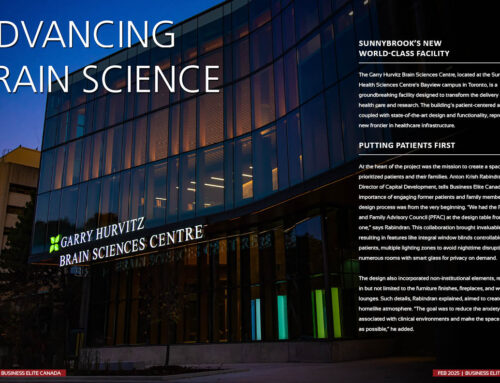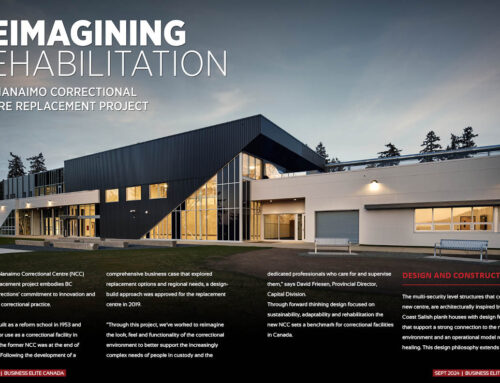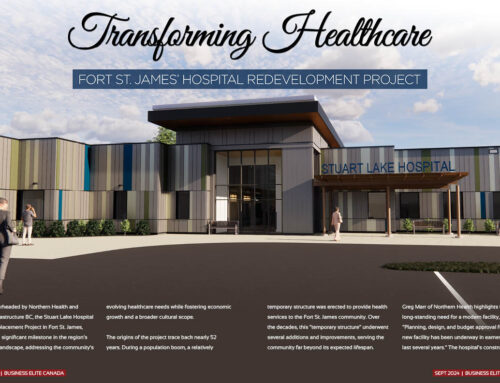In 2023, close to one million patients in need of exceptional and timely radiology services turned to Canada Diagnostic Centres (CDC) for patient care. The first private Magnetic Resonance Imaging (MRI) Centre in Western Canada, CDC delivers every day on its founding goal to boldly reshape the health care landscape with improved access to critical diagnostic services.
Access to MRIs on Your Time
Over the past three decades, CDC has continuously raised the bar in radiology services, introducing groundbreaking technologies and expanding its reach across Alberta and beyond. “Our vision is to lead Imaging and Radiology in Canada by increasing access to quality, innovative and compassionate patient care,” says Darcy Verhun Chief Executive Officer. “We will have a positive impact on the lives of everyone we serve.”
“CDC’s journey has been characterized by innovation and a commitment to patient-centric care,” adds Dr. Robert Davies, President, and Chief Medical Officer.
As CDC commemorates its 30th anniversary milestone, it’s important to contextualize the pivotal role that MRI (Magnetic Resonance Imaging) centers play in the healthcare landscape and the profound impact they have on both patients and the business community.
Private access to MRI technology offers several benefits to individuals and healthcare systems alike. It reduces waiting times significantly compared to public healthcare systems, allowing patients to receive timely diagnosis and treatment—crucial for conditions where early detection is paramount, such as cancer or neurological disorders.
CDC also offers more flexibility in scheduling appointments, accommodating its clients’ schedules and minimizing disruptions to work or personal commitments. CDC’s MRI facilities offer a more comfortable and personalized experience, with amenities like private rooms, shorter wait times, rural clinics and extended hours of operation.
From this wider perspective, private access to MRIs can complement public healthcare services, alleviating the burden on overloaded public systems and providing an alternative for those seeking expedited care.
CDC’s history
Founded in 1993, CDC has evolved significantly over three decades, responding to the growing demand for its services. In 2003, the addition of publicly funded services like ultrasound and image-guided pain management marked a significant expansion of its offerings—an expansion which continued with the establishment of new clinics in Calgary, Okotoks, and Edmonton over the subsequent decade.
In 2013, CDC undertook a substantial acquisition, effectively doubling its size by acquiring clinics from CML in both cities. By 2021, CDC had burgeoned to encompass 18 clinics across Alberta. This milestone year also witnessed a strategic partnership with NovaCap, Canada’s preeminent private equity firm boasting over four decades of success. Leveraging this partnership, CDC embarked on a trajectory of expansion and acquisition, including Guardian Radiology, culminating in its present stature of 42 clinics spread throughout Canada.
Through these strategic initiatives, CDC has steadfastly remained at the forefront of providing accessible and high-quality diagnostic imaging services to communities across the nation. Darcy Verhun says, “Our acquisition of clinics from CML in 2013 marked a significant expansion, doubling our size and solidifying our position as a premier radiology service provider in Alberta.” This strategic move propelled CDC towards its current stature, boasting 42 clinics nationwide by 2021.
Advancing Radiology and Patient Care
CDC’s contribution to advancing the field of radiology in Alberta is multifaceted. Dr. Davies outlined three key pillars: technological innovation, enhanced accessibility, and investment in staff development. “We’ve been at the forefront of introducing new services and technologies, from 3D mammograms to advanced pain management procedures,” he says.
“We’ve invested heavily in technology and also our patient care team, providing comprehensive training programs to enhance their professional capabilities and ensure optimal patient outcomes,” adds Verhun. This emphasis on continuous improvement has solidified CDC’s reputation for excellence in patient care.
Embracing Technological Advancements
In an industry that is experiencing technological innovation at a rapid pace, CDC has remained steadfast in embracing innovation to enhance its services. “We’ve always viewed technological advancements as opportunities rather than challenges,” says Dr. Davies. From 3D imaging capabilities to remote care via teleradiology services, this IT infrastructure positions CDC at the forefront of diagnostic imaging.
“Harnessing AI will enable our staff and physicians to provide faster and more accurate results, further enhancing our ability to increase access to care,” says Verhun. “CDC’s proactive approach to integrating AI underscores its commitment to staying ahead of the curve in meeting evolving healthcare needs.”
Unrivaled Quality of Care and Patient Experience
What sets CDC apart from other radiology service providers is its unwavering dedication to quality of care and patient experience. “Every patient interaction is regarded as a privilege, and we strive to ensure that each individual receives timely accessible, personalized, and compassionate care,” says Verhun. CDC’s expansive service offerings cater to diverse patient needs, reaffirming its commitment to accessibility and affordability. CDC’s focus on patient experience through initiatives such as streamlined scheduling, comfortable facilities, and personalized care, underscores its dedication to meeting the needs and expectations of every client who walks through its doors.
Driving Impactful Change in Healthcare Delivery
Looking ahead, CDC’s goal for the next five to ten years is “to be recognized as the leading nationwide diagnostic imaging provider, serving over 2 million patients annually across Canada,” says Mr. Verhun. This vision encompasses organic and inorganic growth strategies, including expansion into new provinces and the establishment of over 100 clinics nationwide.
Dr. Davies emphasized CDC’s unwavering commitment to improving access to care, stating, “Our goal is to positively impact healthcare delivery by ensuring that every Canadian has access to high-quality diagnostic services.” Verhun adds, “Through strategic expansion and a relentless focus on innovation, CDC aims to reshape the healthcare landscape, driving meaningful change for patients across the country.”
On its 30th anniversary, Canadian Diagnostic Centres continues to push boundaries and redefine standards in radiology services; its impact on patient care and healthcare delivery will undoubtedly endure for generations to come. As a premier provider of radiology services, CDC plays a vital role in offering Canadians a comprehensive suite of diagnostic offerings, enabling precise and accurate diagnoses.
For more information, please visit www.canadadiagnostics.ca






